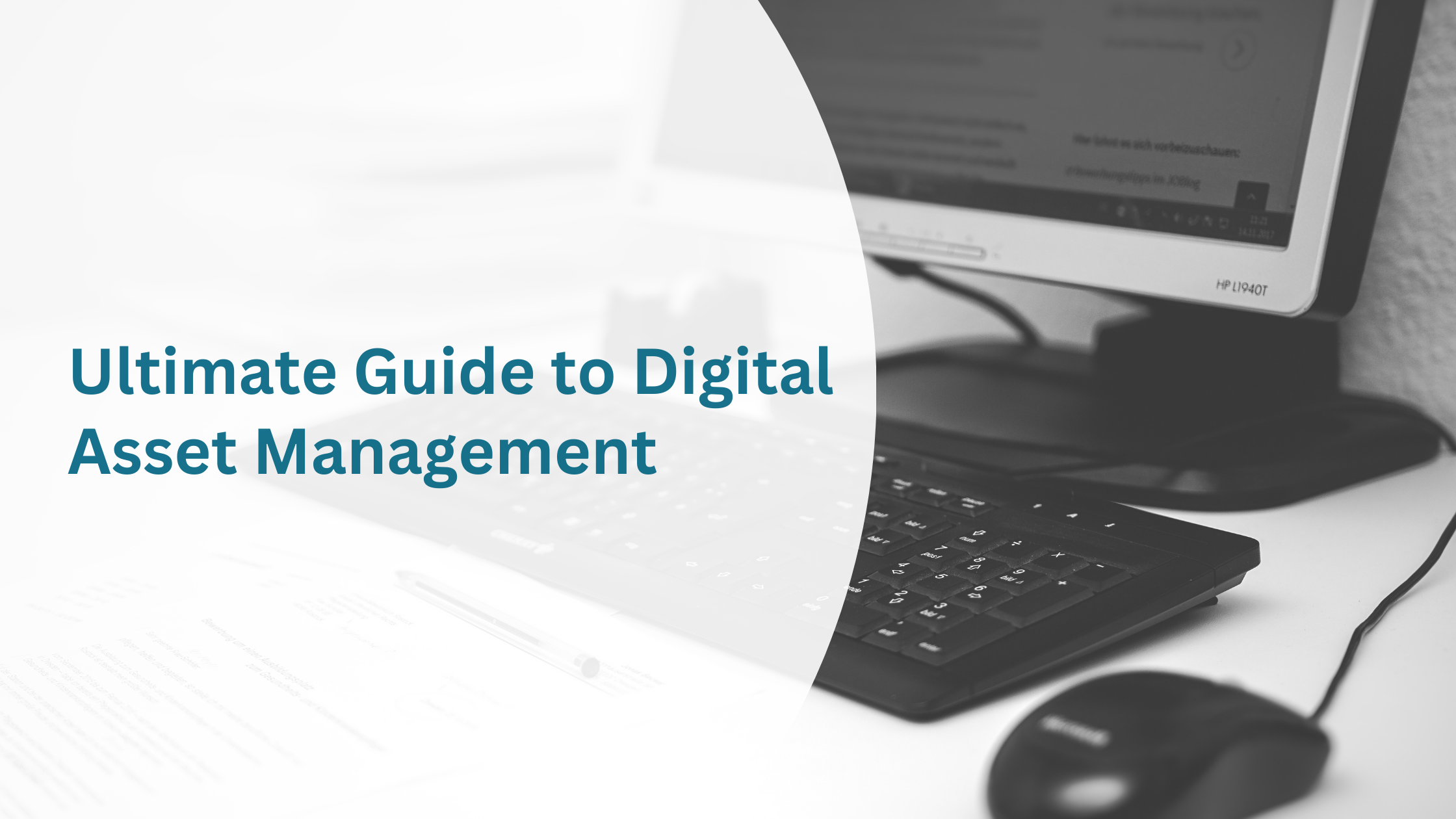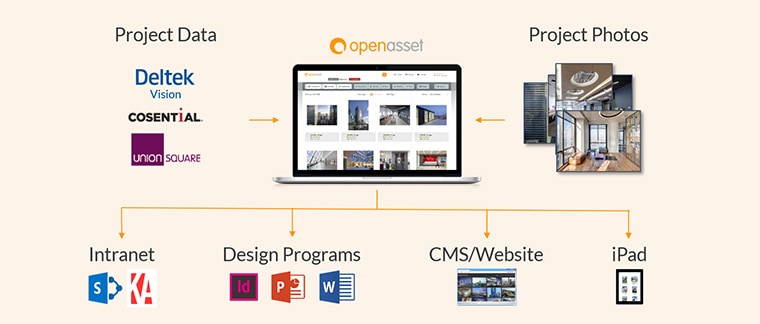Transform DAM with AI
Aug 26, 2023

Artificial Intelligence (AI) has transformed multiple industries with massive improvements, and Digital Asset Management (DAM) is among the areas that have been positively affected by AI technology tool advancements. With the growing challenges of handling large amounts of digital assets, introducing AI into DAM systems has become essential for streamlining asset organization, enhancing search capabilities, and ultimately boosting overall productivity.
In this blog, we will go over the role AI plays in DAM and how AI is transforming DAM solutions and helping firms handle their digital assets more effectively.
What Is AI in Digital Asset Management?
In the current digital world where content is highly important, a DAM solution works as a central hub for managing media by storing, organizing, retrieving, and sharing digital assets. However, as digital content continues to grow rapidly, businesses face increasing difficulties in effectively managing and extracting value from their assets.
A DAM should do more than just handle basic information about files and catalogs. It should offer smart features that make the asset management solution flexible and responsive. This is where AI plays a key role by improving the management of metadata, enhancing search and discovery processes, and streamlining workflow and automation.
The Technology Behind AI in Digital Asset Management
As an emerging technology, implementing AI technology is necessary to meet the ever-evolving demands of the modern world.
AI cannot run a marketing department or design the blueprint for a skyscraper. However, you can achieve realistic goals for AI tech by being clear about your objectives. In doing so, AI’s specific capabilities can be adapted to suit your particular industry. This makes the significant technical challenges presented by AI adoption easier to navigate.
AI asset management involves the use of advanced technologies like Machine Learning (ML), Natural Language Processing (NLP), Computer Vision, and more. These technologies help automate tasks such as tagging, categorizing, and describing digital assets.
The technology supporting AI is rapidly accelerating. Economic forecasters have identified it as a critical area of growth that businesses will need to consider to remain competitive. Here is what that technology looks like:
Machine Learning (ML) for Asset Management
Machine Learning (ML) falls under the wide umbrella of AI and refers to an algorithm that can enhance itself over time. AI systems utilize ML algorithms to imitate human intelligence patterns, requiring data and time for learning and improving. By training an ML algorithm on a particular dataset, it can identify patterns within the data and make predictions or recognize similar patterns in new datasets. For example, if you were to train an ML algorithm with images of various dog breeds, it would eventually be capable of distinguishing a German Shepherd from a Golden Retriever and other breeds.
Deep Learning (DL)
Deep learning (DL) is a subset of machine learning techniques that relies on artificial neural networks to perform representation learning. DL techniques are used for advanced content analysis in DAM systems. The advancements in deep learning techniques have facilitated more precise and detailed tagging and classification of assets. Deep learning models can understand complex patterns and features, therefore enhancing the accuracy and effectiveness of automated tagging processes.
Natural Language Processing (NLP)
Natural Language Processing (NLP) is a branch of AI that specifically focuses on enabling computers to analyze and understand human language. When it comes to a DAM system, the use of AI-powered NLP techniques allows for the analysis of textual content like documents or articles. These techniques can automatically extract important information such as author names, publication dates, and relevant keywords. By automating the creation of metadata, AI ensures accuracy and consistency throughout the asset library. This eliminates human errors and discrepancies that may occur when assigning metadata manually.
Computer Vision
While scanning images, AI systems use techniques such as image recognition, object recognition, and facial recognition. The AI algorithm carefully examines the image or video, searching for visual cues that help in the identification of images, objects, and human features present in the visual content. In a DAM system, computer vision can be leveraged to examine the visual elements of digital assets, such as images and videos, to automatically tag and categorize them.
Cloud Computing
One of the main drivers for the rise of AI is the shift from local network storage to cloud computing. Increased use of cloud-based networks by businesses has made available the large data sets necessary for machine learning.
Cloud servers can store nearly unlimited volumes of data. They can also deliver analytics in real-time, offering analysts the capability to provide improved insights. By creating data models that mirror the neural networks of the human brain, software engineers have been able to develop sophisticated algorithms that power AI.
The AI services available for integration into SaaS products via API have also stimulated widespread adoption. The launch of services by companies such as Google, Amazon, Microsoft, and IBM has enabled businesses to benefit from the research and development efforts of these companies, without the prohibitive costs.
This approach has built a developmental ecosystem whereby large companies undertake the innovation work that improves the efficiency and power of AI tech. Smaller companies then use disruptive innovation to open the technology up to new markets and users.

Benefits of AI for Asset Management
The objective of AI systems is to conduct tasks that typically demand human intelligence, aiming to minimize reliance on human intervention as much as possible.
An AI should possess the capability to engage in tasks requiring reasoning and learning. It achieves this by leveraging information, like perception and motion. By analyzing this information, AI can create representations and manipulations of knowledge.
AI in the digital asset space can improve searchability, manage metadata more effectively, and provide analytics powered by AI.
Now that we’ve looked at the technology behind AI in DAM, let’s explore the benefits AI in digital asset management brings.
Speed
One of the primary advantages of AI is its remarkable speed. Artificial intelligence asset management solutions can process information in real-time, resulting in dynamic media management capabilities. This feature is particularly advantageous for companies wanting to provide personalized content to enhance customer experience and boost sales.
Automation
AI serves as the driving force behind numerous automation processes, relieving you of repetitive and manual tasks. A notable illustration of this is auto-tagging and automatic optimization, which we will go into detail later.
Smart Search
One of the most valuable contributions of AI for asset management solutions is its ability to effortlessly sort, filter, search, and organize content. Unlike Content Management Systems (CMS) which may struggle with handling large amounts of content, AI enables smart search functionality, guaranteeing that you can always easily have access to what you need.
Metadata Management
AI-powered algorithms can examine digital assets and automatically generate precise and relevant metadata, requiring less time and effort on your part. This significantly enhances asset organization and searchability, allowing users to quickly locate the appropriate assets they require.
Improved Search and Discovery
AI techniques such as NLP and ML can enhance search capabilities by comprehending user queries, context, and intent. By analyzing the content of digital assets, AI algorithms can provide more precise search results and offer advanced filtering options to users.
Streamlined Workflow
AI can automate repetitive tasks within DAM workflows, giving you more time to focus on creative tasks. For instance, AI-powered tools can automatically adjust the size and format of images to suit various platforms, decreasing the need for manual interference and guaranteeing consistency across multiple platforms.
| TIP: Want to know how OpenAsset conducts AI research and development to bring new AI features to your AEC DAM needs? Read our blog on how OpenAsset Delivers Artificial Intelligence in DAM now. |
Examples of AI in Asset Management
To gain a clearer understanding of how AI is applied in DAM, let’s take a look at a few examples:
AI Auto-Tagging
A tag works as a keyword that assigns a classification to digital assets. In most DAM systems, you have the freedom to create and use numerous tags as additional metadata. This allows you to refine your search, filtering, and file-sorting processes.
Typically, DAM users are required to manually apply keywords one by one to each uploaded digital asset, which can be time-consuming. With auto-tagging, you can let the DAM solution do the tagging. This means the AI system scans images, recognizes the objects within them, and then applies relevant keywords as tags.
Facial Recognition
With facial recognition, AI algorithms can analyze images and automatically identify faces. This results in prompt and precise tagging of individuals within the assets. Facial recognition also simplifies the process of searching and retrieving content based on people’s faces, ultimately saving you valuable time.
Speech-To-Text Conversion
AI can improve DAM systems through an impressive capability called speech-to-text conversion. By combining deep learning neural networks and NLP techniques, AI software can transcribe spoken words into text. It does this by analyzing audio input and segmenting it into words. This technology can effectively recognize and interpret words and sounds within the audio file, enabling accurate and efficient conversion from speech to text.
If you use your DAM to store audio files, there’s a possibility that you also store transcriptions of those files. However, the task of transcribing audio files can be time-consuming. This feature significantly reduces the time required to transcribe audio or video files into text. This can be particularly crucial within the context of DAM because these transcriptions become searchable, making it considerably easier to find the necessary audio or video files.
Image Similarity Search
With AI-powered image similarity search, you can easily find the specific image or video you need without relying on keyword guessing or a complex taxonomy system. By using AI-powered image recognition, DAM systems can calculate the probability of images featuring similar content. This allows you to discover images in a new way that works alongside metadata-based searches.
The Challenges of Artificial Intelligence in Asset Management
While there are many ways AI can improve DAM functionality, there are also challenges to consider. Here are some of the challenges organizations need to tackle when integrating AI with a DAM system:
- Accuracy of suggested keywords in auto-tagging
- Leadership buy-in
- Data Privacy and Security
- Algorithm Bias and Fairness
- Users may need to adopt new workflows and interfaces
- Organizations may need to invest in user training and change management
AI in DAM: Future trends
Looking ahead, DAM will persist in delivering the reliable features and functionalities that users depend on. However, DAM solutions will be transformed by AI advancements. The progress in computer vision and NLP is propelling AI systems to new levels of power and reliability, allowing for the automation of an increasing number of tasks in digital asset management.
Some artificial intelligence in DAM trends to look out for in the future include:
- Enhanced metadata generation and management
- AI-powered analytics
- AI image generation
- Predictive AI in DAM
- DAM virtual assistants
- Improved tagging and classification
- AI-powered personalized content recommendations
- Generative AI for project descriptions and employee bios
These technological advancements will improve the quality, accuracy, and functionalities of DAM solutions, resulting in higher productivity and effectiveness while managing assets.
What to Look for When Implementing an AI-Based Asset Management System
When implementing an AI-based asset management system, it’s important to first define the scope and objectives, ensuring the AI tools are tailored to specific asset types. The system should be scalable, integrate seamlessly with existing infrastructure, and prioritize data security.
It’s necessary to select a solution with user-friendly interfaces, robust analytics, and reporting capabilities. You should also consider vendor support, cost-effectiveness, and future upgrade paths to ensure longevity and adaptability of the system.
At OpenAsset, we offer an AI DAM solution for the built world to streamline processes and increase efficiency. When it comes to your tech stack, the integration of AI in digital asset management will improve user experience and search quality. AI in OpenAsset saves you time and resources in managing your images. This is accomplished through:
AI Suggested Keywords: This feature provides both general and AEC-specific keyword suggestions for each image. It reduces the time it takes to manually tag images and helps AEC firms build and expand taxonomies.
Image Similarity Search: OpenAsset uses AI to enhance search functionality by identifying similar features across your entire collection of images. This allows you to discover images that share similar characteristics, providing you with more options to choose from.
Batch Editing: The ability to find images based on similar features makes batch editing simple. You can find and select groups of images and add relevant keywords across all of them at one time, saving you valuable time.
| TIP: To learn more about what AI features OpenAsset offers, you can find more information on our Artificial Intelligence page. |
AI at OpenAsset
Our product team continues to conduct research on AI to arrive at solutions that improve your user experience and drive efficiency for your organization. And while we are excited about the future of this technology, we think it’s important to share that we remain committed to using AI in a responsible, safe manner. Every article and piece of content you read from OpenAsset is written by a real human. And when you request assistance, an actual human will be helping your team.
To experience the full benefits of an AI DAM like OpenAsset, request a demo with us and learn how OpenAsset can help you manage your digital assets today.





